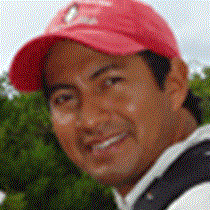Floreana Island
We have left behind the youngest islands and the endless lava fields to enter the realm of the older central part of the Galápagos. These islands are at least two million years old. Some of them are much older, therefore there are larger number of organisms inhabiting the different ecosystems created over the eons of time.
We have spent an entire day on Floreana Island, and this island, besides having interesting facts in the field of natural history, has a rich human history. This was the fist place colonized by Ecuador making it the capital of the archipelago back in 1832.
In the morning we paid a visit to the legendary post office barrel. This barrel has existed here since 1792 and has been visited by people from all over the word. At the beginning it was frequented by whale hunters, seal hunters and other early voyagers who truly needed a way to communicate with their counterparts in Europe.
In the middle of the morning we visited Champion Island, a little rocky speck on the northern side of Floreana. This place is astonishing for its marine life and we had close encounters with tropical fish of different types and colors. When you jump in the water you see layers and layers of tropical fish such as parrot fish, king angel fish, white tipped reef sharks and sea lions, just to mention a few.
In the afternoon we still had a lot of energy for kayaking along the cliffs of Floreana at Punta Cormorant, observing sea lions and sea turtles in the water and some blue footed boobies perching on the cliff. Later on, we disembarked for a leisure walk to explore the island and do some bird watching along the flamingo lagoon.
The icing on the cake was the sunset we saw on our way back to the National Geographic Islander. Just amazing. I can’t wait to see more!
We have left behind the youngest islands and the endless lava fields to enter the realm of the older central part of the Galápagos. These islands are at least two million years old. Some of them are much older, therefore there are larger number of organisms inhabiting the different ecosystems created over the eons of time.
We have spent an entire day on Floreana Island, and this island, besides having interesting facts in the field of natural history, has a rich human history. This was the fist place colonized by Ecuador making it the capital of the archipelago back in 1832.
In the morning we paid a visit to the legendary post office barrel. This barrel has existed here since 1792 and has been visited by people from all over the word. At the beginning it was frequented by whale hunters, seal hunters and other early voyagers who truly needed a way to communicate with their counterparts in Europe.
In the middle of the morning we visited Champion Island, a little rocky speck on the northern side of Floreana. This place is astonishing for its marine life and we had close encounters with tropical fish of different types and colors. When you jump in the water you see layers and layers of tropical fish such as parrot fish, king angel fish, white tipped reef sharks and sea lions, just to mention a few.
In the afternoon we still had a lot of energy for kayaking along the cliffs of Floreana at Punta Cormorant, observing sea lions and sea turtles in the water and some blue footed boobies perching on the cliff. Later on, we disembarked for a leisure walk to explore the island and do some bird watching along the flamingo lagoon.
The icing on the cake was the sunset we saw on our way back to the National Geographic Islander. Just amazing. I can’t wait to see more!




